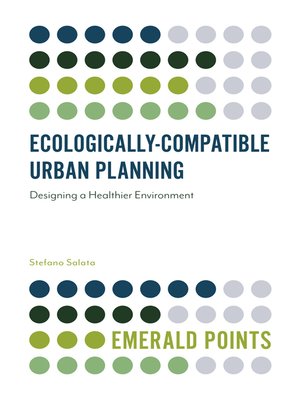Ecologically-Compatible Urban Planning
ebook ∣ Designing a Healthier Environment · Emerald Points
By Stefano Salata

Sign up to save your library
With an OverDrive account, you can save your favorite libraries for at-a-glance information about availability. Find out more about OverDrive accounts.
Find this title in Libby, the library reading app by OverDrive.



Search for a digital library with this title
Title found at these libraries:
| Library Name | Distance |
|---|---|
| Loading... |
Ecosystem service mapping is a fundamental part of developing healthier cities and ensuring environmentally-oriented land use.
Ecologically-Compatible Urban Planning: Designing a Healthier Environment demonstrates that renewed collaboration between environmental scientists and urban planners is essential in reforming the traditional method of urban planning to meet the emerging issues posed by contemporary living in urban areas affected by climate change. The first part introduces the reader to the main challenges in urban planning by explaining how changing conditions require a new approach to spatial policies and a more ecological-oriented approach to the city. Part two demonstrates how the traditional approach to the ecological study of urban systems should be integrated with new competences to aid the decision-making phase during urban planning. Part three presents case studies that demonstrate how urban areas are vulnerable to climate conditions and how changing scenarios affect quality of life.
This book demonstrates how to bridge the gap between the theoretical assessment of ecosystem service and its real utilization for land use planning practices.
Ecologically-Compatible Urban Planning: Designing a Healthier Environment demonstrates that renewed collaboration between environmental scientists and urban planners is essential in reforming the traditional method of urban planning to meet the emerging issues posed by contemporary living in urban areas affected by climate change. The first part introduces the reader to the main challenges in urban planning by explaining how changing conditions require a new approach to spatial policies and a more ecological-oriented approach to the city. Part two demonstrates how the traditional approach to the ecological study of urban systems should be integrated with new competences to aid the decision-making phase during urban planning. Part three presents case studies that demonstrate how urban areas are vulnerable to climate conditions and how changing scenarios affect quality of life.
This book demonstrates how to bridge the gap between the theoretical assessment of ecosystem service and its real utilization for land use planning practices.







